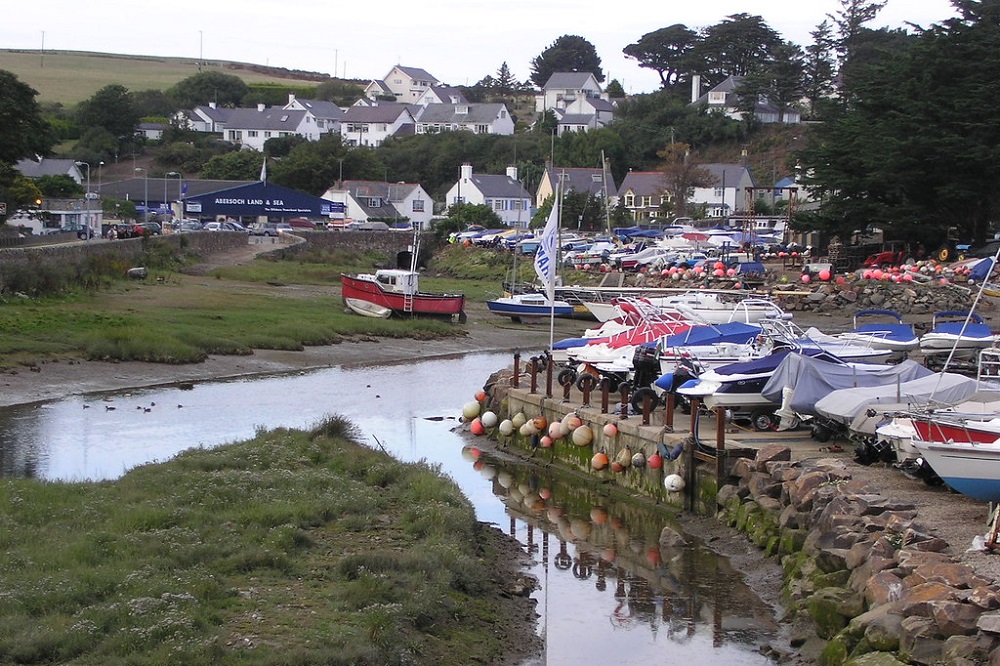Gwynedd records increase in Welsh speakers in areas popular with second home owners

Dale Spridgeon, local democracy reporter
Gwynedd communities popular with second home owners are among areas that have seen a rise in the number of Welsh speakers. The rise in areas including Abersoch and Llanbedrog has been welcomed by community leaders, although Cyngor Gwynedd warned against reading too much into the figures.
The two villages recorded the highest increases in Welsh language users, with a 5.4% increase over the ten years from 2011 to 2021. Dyffryn Ardudwy and Llanbedr saw the second highest rise, with an increase of 5.2%.
Abersoch is one area with numerous second and holiday homes which are often cited as having a negative impact on the language. Cyngor Gwynedd says the data needed further analysis.
The figures came from the national Census results, published in December, and shared in a Cyngor Gwynedd report during a council language committee meeting on Monday, January 30. Among the stats, data showed neighbourhoods (LSOAs) with the greatest percentage increase of Welsh speakers, from 2011 to 2021.
Llangelynnin was also up by 4.3%, Pentir by 4.2%, and Y Felinheli up by 4.0%. Gwynedd councillors have welcomed the figures.
Welcome
Councillor for Abersoch with Llanengan, John Brynmore Hughes said: “The fact that more people are speaking Welsh is very welcome, there are more people taking up learning in the village. Some people moved down during Covid and made this their permanent residence.
“There is a Welsh course by Bangor University, we have Nant Gwertheryn and classes in nearly every village now. It’s a good sign, people are going to the effort to learn and speak Welsh to take part in the community.”
Harlech and Llanbedr Councillor Gwynfor Owen said: “The stats are a bit strange, they show two different areas put together, Dyffryn Ardudwy and Llanbedr. There is a big decrease in Barmouth, which is nearby and if you go towards Harlech, there’s a tiny increase.
“It’s very difficult to say why these figures show a rise, although any rise in Welsh speaking is welcomed.” Councillor Angela Russell for Llanbedrog with Mynytho, said it was “welcome news and positive”.
Harlech and Llanbedr Councillor Annwen Hughes said: “I’m very pleased it’s gone up, and not the other way. The only thing I can think is that local people are not moving away.
“The local primary school is thriving, if you go in as an English speaker you learn Welsh, that has been going on for years. My area has not been impacted so much by the second and holiday issue, not as great as on the Llŷn.”

The Census recorded the highest percentage of Welsh speakers in 2021 alone, which included Seiont [86.3%], Llanrug [86.0%], Bethel and Cwm y Glo [85.9%], Peblig [84.6%] and Penygroes [83%]. The lowest was in Deiniol [19.6%], Menai (Bangor) [22.4%], Hirael and Garth [33.0%] and Tywyn [36.1%].
Census Day 2021 showed that 73,560 people (aged 3+) were able to speak Welsh in Gwynedd, down from 2011 when it was 77,000, at 65.4%. Gwynedd has seen a drop in Welsh speakers at each Census since 1981.
A Cyngor Gwynedd spokesperson said it was “too early” to understand exactly the changes. A spokesman said: Initial 2021 Census results provided “some indication” of the state of the Welsh language across Gwynedd but would need “further analysis”.
They said: “The 2021 Census was conducted at a time when pandemic restrictions were in force, the methods of collecting Census data have been improved over the decade, might also be affecting some of the comparisons. Even after further analysis, the answer is likely to be a very complicated one, we do not believe that any changes can be attributed to one thing or establishment in particular.
“Language use is affected by many factors, social, economic and environmental.” It also pointed to the impact of education and housing policies over the last few years which could also have “contributed”.
Social factors played a part “that the council cannot control,” such as migration (inwards and outwards), an increase in remote working (even before the pandemic) and a general decrease in the population. The council is developing its next “language strategy” looking at ways to improve the situation over the next decade.
Support our Nation today
For the price of a cup of coffee a month you can help us create an independent, not-for-profit, national news service for the people of Wales, by the people of Wales.





Wait, wait, what? The narrative is wrong? How can welsh speaking increase where there are second homes. How was this article published?
The 2021 Census only recorded who was occupying a residence on Sunday 21st March 2021. As the article says this was during the pandemic and restrictions on travel were in force so those who own second homes would not be in residence. Therefore, the 2021 Census will not show an accurate picture of the state of the Welsh language in Gwynedd or any other part of Wales with a high number of second homes. The state of the Welsh language could be even worse than the published official figures.
Or rather the second homers may have been in residence but not admitting it.
Numbers versus Percentages. There are lies, damn lies and statistics.
Are we to be surprised by The decrease in Barmouth!
Are we to be surprised with decreases anywhere? Completely expected with the population exchange that’s happening.
The first few paragraphs of this report percentage increases but not the total percentages in each area. It is not clear whether this is the percentage increase or percentage points.